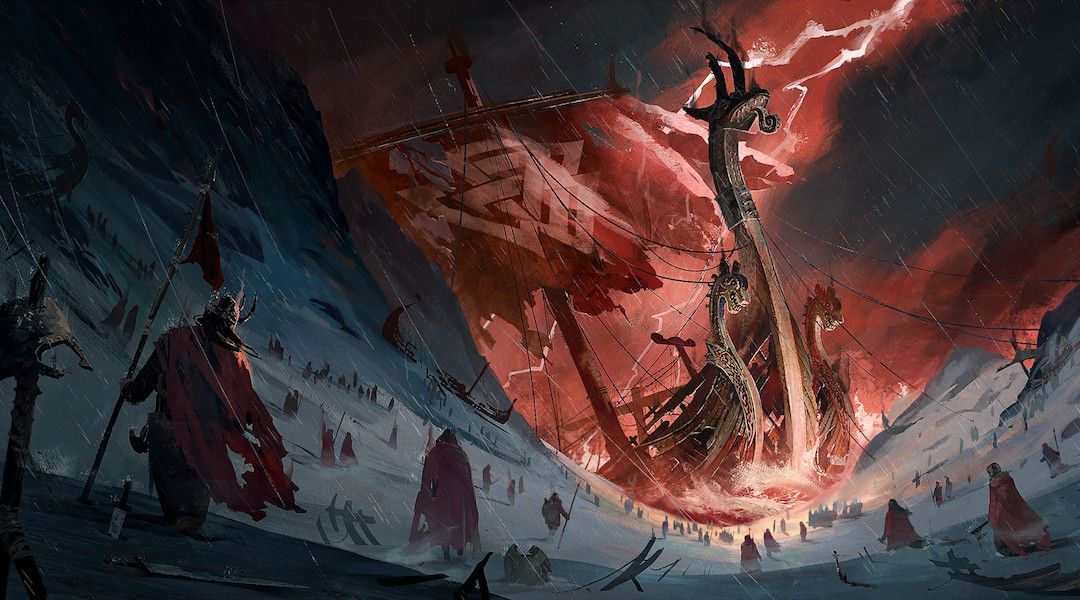
The Vikings
A brief History
Who were the Vikings?
Notorious for their violent raids, the Vikings influenced everything from language to tax systems throughout much of the world.
Helmets with horns. Massive ships. Brutal warfare. When it comes to the Vikings—Scandinavian seafarers known for their far-flung raids on other people—stereotypes and misconceptions abound. Who were these nautical explorers, really, and should they even be called Vikings?
That’s a controversial concept. The word was initially used to describe not a people, but rather the activity of exploring, piracy, or raiding. After being revived in English in the 19th century, the term “Viking” came to represent the Scandinavian seafarers who ventured beyond their borders to explore, raid, and ultimately settle between about 790 and 1100 A.D.
Those raiding journeys were expansive and often violent. Beginning in the 790s, Scandinavian pirates sailed south and attacked largely defenceless monasteries in England, Scotland, and Ireland. It heralded the beginning of a new era of Swedish, Norse, and Danish exploration. The reasons behind the incursions are still debated by historians but may have related to a lack of marriageable women, a desire for slave labour, or a desire to expand trade networks.
International raiders
Starting in 865, the Vikings began a massive invasion of England. Known as the “Great Heathen Army,” the pagan soldiers attacked and took over three of England's four Anglo-Saxon kingdoms. Though referred to in military terms at the time, the raiders also included traders, women, and children. The remaining unconquered kingdom, Wessex, escaped Viking rule but engaged in years of fighting. Eventually, the Danelaw, the lands were taken over by Danish Vikings, extended across the entire northeastern portion of England. (Norwegians settled in Scotland.)
England wasn't the only place where the Vikings made themselves known: they sailed as far south as North Africa, as far west as Canada, and into the Middle East, Russia, France, and Spain (see a map). Along the way, Vikings settled, intermixed with the people they conquered, and influenced everything from language to warfare.
Between the 9th and 11th centuries A.D., Vikings conducted more raids. But the Second Viking Age, as it was known, involved a new form of power: money. Vikings demanded payment, later known as “Danegeld,” in exchange for not conducting raids and maintaining peace. England’s taxation system was founded on this method of extortion.
Waning influence
By about 1100, Viking dominance diminished. Political power consolidated as scattered chiefdoms gave way to Scandinavian kingdoms and legal institutions. Vikings' targets had invested in fortifications and learned to defend themselves. The Battle of Hastings brought the end of Viking rule in England in 1066, and the adoption of Christianity within Scandinavia slowed the raids.
Though popular culture continues to depict Vikings as wearing horned helmets (they didn’t) and drinking from skulls (also a myth), their peaceful trading and cultural sharing belies the violent legend. The Vikings’ cultural power and contributions to the communities in which they settled were just as potent as their ability to sail and pillage.
Why did I choose this text?
I choose this text because I grew up with National Geographic and it has been my 'to go to' if I wanted some basic information about a subject. National Geographic covers a lot of interesting subjects and it's written very easily for their readers. Even if this article just scratched the surface of the Viking Era history, it does cover some stereotypes and misinformation. Erin Blakemore (2019) made sure to back up their story with done research and included them in the article.
How did I come up with this text?
I was originally looking for a text that would be suitable for TP, but some of the words used in this particular article are beyond intermediate level and therefor a bit too hard for my group of students. I decided to put this text here as a short introductory article since there are many misconceptions about Vikings.
How does the text link to the Theme or any other Theme discussed?
The text links perfectly to the theme since it covers a brief history of Viking history but more importantly, the influences it had on the ESW today. It also covers the theme War, since the Vikings were seafarers and just like pirates; raiders. they conquered every land they saw and slaughtered many.
Personal response
My own personal response to this text is kinda neutral. I knew a lot of these facts already since I choose a subject in which I already gained some knowledge. I did this on purpose since I like the subject and wanted to broaden my knowledge prior to what I already knew.
